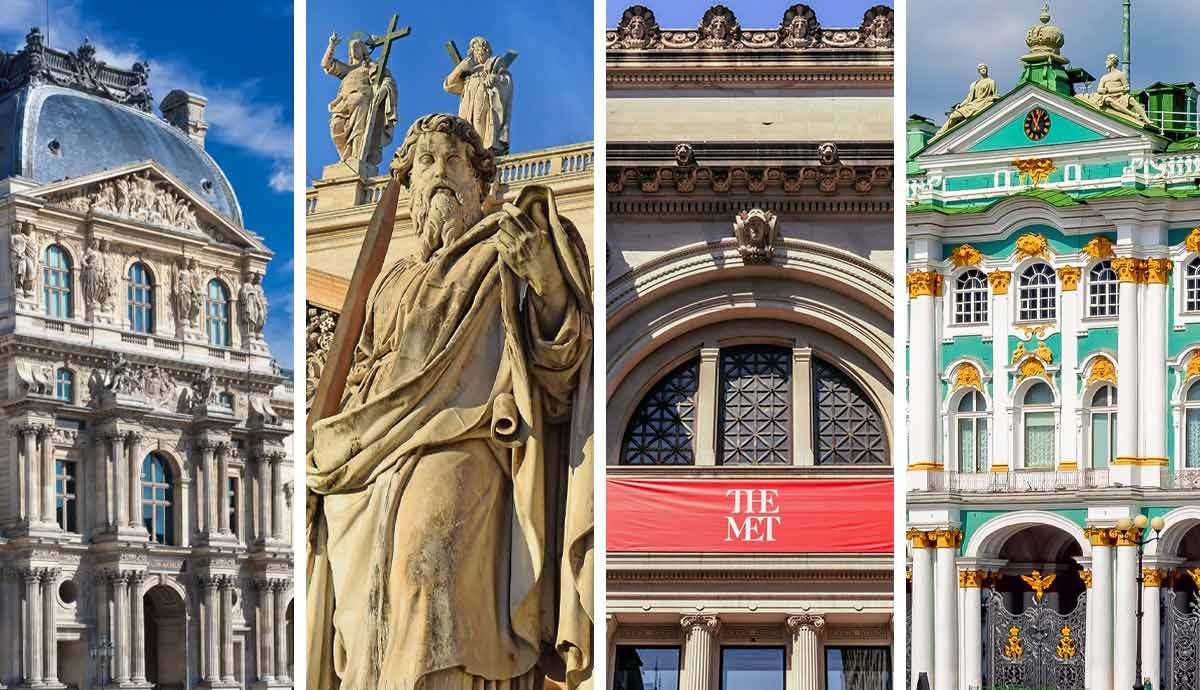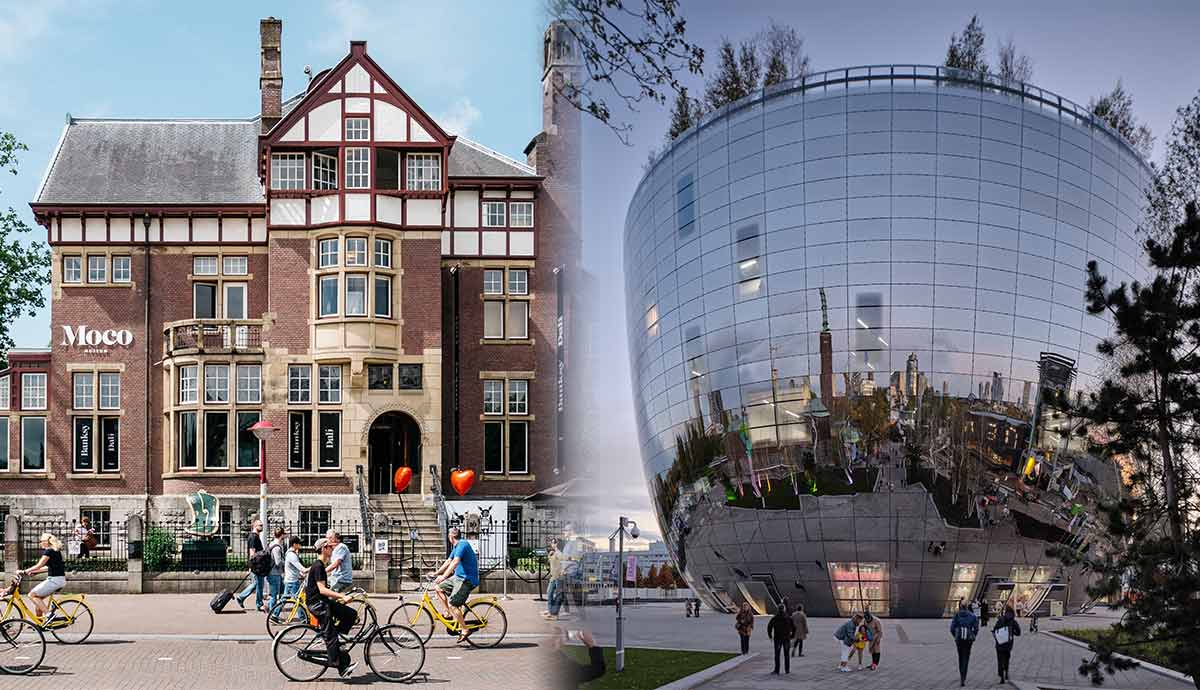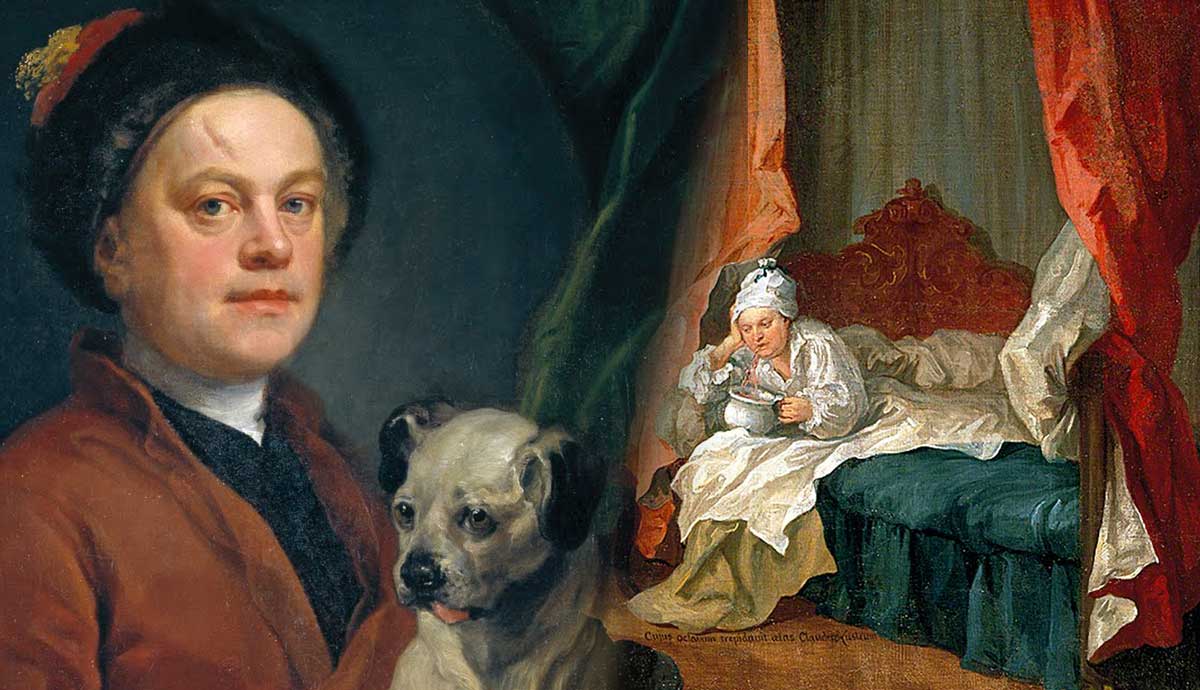
What do hyper-realistic tulips, chaotic family dinners, and mysterious pearl earrings have in common? The art of the Dutch Golden Age. For much of its history, the art and culture of the northern Netherlandish territories were overshadowed by those of Flanders, their southern neighbor. By the beginning of the 17th century, however, the Dutch Republic was emerging as Europe’s most prosperous nation. Dutch trade, culture, and education—as well as Dutch colonialism and military power—began to flourish like never before. The unique economic and cultural climate of the Dutch Golden Age led to unprecedented artistic production and innovation. This included the development of exciting new genres of painting and the creation of memorable masterpieces like Girl with a Pearl Earring.
What Is the Dutch Golden Age?

The year 1588 marked the founding of the Dutch Republic—and the official beginning of its Golden Age. At the turn of the 17th century, the new Dutch Republic gained control of Europe’s international trade, generating immense wealth and political power. As a result, the majority of people living in the Dutch Republic enjoyed upper-middle-class lives. A more egalitarian distribution of wealth naturally created a new market for art commissioned by civilians, as opposed to the monumental government and church-sponsored art that characterizes much of European art history.

The Dutch Republic also rejected Catholicism in favor of Calvinism. Because Calvinism disallowed religious imagery in its churches, the market for religious paintings practically vanished. It was replaced by the growing demand for secular art—including genre scenes, portraiture, and still life—by civilian patrons. This shift helped set Dutch art and culture apart from other parts of Europe. The widespread prosperity and cultural boom of the Dutch Golden Age were eventually thwarted by the political instability following the outbreak of the Dutch-Franco War, as well as other conflicts at home and overseas. The Dutch Golden Age officially ended in 1672.
The Rise of Dutch Genre Painting

As the Dutch Golden Age unfolded, so did Baroque painting across Europe. Dutch artists took note, but primarily favored the staunch realism of Early Netherlandish painting over the idealization and dramatic grandeur of Italian Baroque art. During the 17th century, Dutch artists began specializing in specific types of paintings, often spending their entire careers focused on a particular niche. Genre painting—a type of painting that refers to realistic portrayals of ordinary people and aspects of everyday life—especially flourished during the Dutch Golden Age.
Overtly religious imagery had fallen out of favor along with Catholicism, so genre scenes became vehicles not just for representing 17th-century Dutch people and culture, but Dutch morals as well. For example, at first glance, Jan Steen’s bombastic painting of a family dinner is an everyday domestic scene composed of ordinary people and objects. The title of the painting, as well as subtle details throughout the composition, reveal a moralizing undertone: As the Old Sing, So Pipe the Young.

Dutch genre painting is perhaps best remembered by Johannes Vermeer, who remains one of art history’s most renowned artists. By elevating everyday subjects in his work, Vermeer helped elevate the status of genre painting as a whole. Previously, genre painting ranked low on the traditional hierarchy of art according to Western institutions, which favored grandiose history paintings above all else. But Vermeer and other artists of the Dutch Golden Age subverted this tradition and helped establish genre painting as culturally significant. The Milkmaid, one of Vermeer’s most famous works, portrays an ordinary subject through an extraordinary artistic lens. Vermeer’s use of classical composition, heroic lighting, and a carefully composed color scheme contribute to this effect.
Dutch Portraiture

Today, the Netherlands is renowned for its rich history of portrait painting—and it’s all thanks to the daring innovations of artists during the Dutch Golden Age. Traditionally, only the wealthiest and most notable citizens could afford to commission a portrait by an established artist. The primary purpose of these portraits was to idealize the sitter and immortalize their high status. But the Dutch Golden Age gave way to a radically new mode of portrait painting.
With an enormous population of patrons willing and able to commission portraits, as many as one million Dutch portraits were produced during the 17th century. Dutch portraiture wasn’t just abundant, it was also incredibly innovative. Emerging artists like Rembrandt van Rijn and Frans Hals rejected the static and stoic portraits from generations past. Instead, they embraced a revolutionary new style of portrait that was active, naturalistic, conversational, and sometimes even humorous. Most significantly, group portraiture emerged as a distinctive and dynamic subgenre of Dutch portrait painting.

At the start of his career, Rembrandt’s portraits contributed to his growing popularity and financial success. Rembrandt was only twenty-five years old when he was commissioned to paint a prestigious portrait of a group of Amsterdam surgeons. Rather than rendering a solemn lineup of recognizable faces, Rembrandt painted each surgeon actively, and uniquely, participating in an ongoing anatomy lesson. Another dramatic element of Rembrandt’s group portrait is the inclusion of space for the real-life viewer. At the foot of the cadaver, Rembrandt deliberately left space for a real-life spectator to engage in the anatomy lesson. Advancements in Dutch portraiture spread beyond the Dutch Republic and influenced the trajectory of art across Europe.
Dutch Still Life Painting

Known as stilleven in Dutch, still-life painting emerged as an independent genre of painting during the Dutch Golden Age. The source of economic power in the new Dutch Republic was international trade, as Amsterdam, with convenient access to global trading routes, became one of Europe’s most important port cities. The Dutch controlled the international circulation of foreign imports like spices, porcelain, tea, sugar, and silk. Additionally, Dutch domestic goods—such as tulips—were internationally in-demand. This trading power and the luxury goods that proliferated Dutch society as a result naturally gave way to the explosion of still life painting’s popularity.

Still-life painting of the Dutch Golden Age provides a fascinating and intimate look into the lives of 17th-century Dutch people, from what they ate for breakfast to the latest trends in interior decorating. These paintings exhibit extraordinary attention to detail. If you look closely at almost any Dutch still life painting, you’ll notice illusionistic details like reflections of windows in glassware or dewdrops on flower petals. These paintings weren’t just intended to be decorative, however. Dutch still life also famously delivers subtle philosophical, spiritual, or otherwise moralizing messages. For example, the still-life subgenre of vanitas warns viewers against vanity through the disguised symbolism of everyday objects.
Dutch Landscape Painting

As the Dutch Republic thrived during its Golden Age, so did the tradition of Dutch landscape painting. The unique characteristics of Dutch landscapes were especially celebrated during this time of prosperity and national pride. Beautifully painted and heroically presented windmills, rural villages, and even cloudy skies became important symbols of Dutch identity. At the same time, as Dutch colonization expanded, so did the market for “exotic” landscapes.
The Dutch West India Company seized Portuguese and Spanish colonies in pursuit of sugar cane plantations, which brought enormous profit to the European market. Many artists saw Dutch colonialism as an opportunity to create and sell landscape paintings of foreign locales. Patrons of these paintings could use them to express their refined international taste, experience a sense of escapism, or relish their foreign travels.
Slavery During the Dutch Golden Age

In spite of democratic ideals and notions of equality and democracy, the fact is that much of the prosperity and wealth of the Dutch Golden Age was rooted in the exploitation of African people and land, and not necessarily in the fair trade of resources across borders and cultures. The Netherlands participated in the transatlantic slave trade for 200 years and was involved in colonization and conflict in Africa, Asia, and the Americas during its so-called Golden Age and beyond. Hundreds of thousands of Africans were enslaved and trafficked to the Netherlands during its involvement in the slave trade.

Much of the art by which the 17th-century Dutch Republic is remembered only occasionally included Black subjects. Most often, Black people appeared in subservient or secondary roles. Two African Men by Rembrandt is an unusual example that depicts Black people as the main subject of the painting. Most likely, the two men that sat for Rembrandt’s portrait had been freed from slavery and lived in Amsterdam. In recent years, cultural institutions across the Netherlands have made efforts to more accurately contextualize the art and other accomplishments of the Dutch Golden Age. The Amsterdam Museum, for example, recently stopped using the term Golden Age altogether in order to acknowledge the experiences of enslaved and impoverished people in the 17th century.
The Legacy of Dutch Golden Age Painting

From Rembrandt’s dramatic and emotional portrait style to the centuries-long tradition of painting exquisitely detailed floral arrangements, the art of the Dutch Golden Age remains a crucial fixture in the history of Western art and the cultural identity of the Netherlands. 17th-century Dutch art contributed to the elevation of genre and still-life painting as veritable genres of fine art in Europe. World-renowned artists like Rembrandt and Vermeer flourished during this period and, centuries later, their work continues to wow museum-goers worldwide. Understanding the unique cultural and economic forces that shaped the 17th-century Dutch Republic, as well as the effects of slavery and colonialism, helps paint a more accurate picture of the Dutch Golden Age and its art history.









